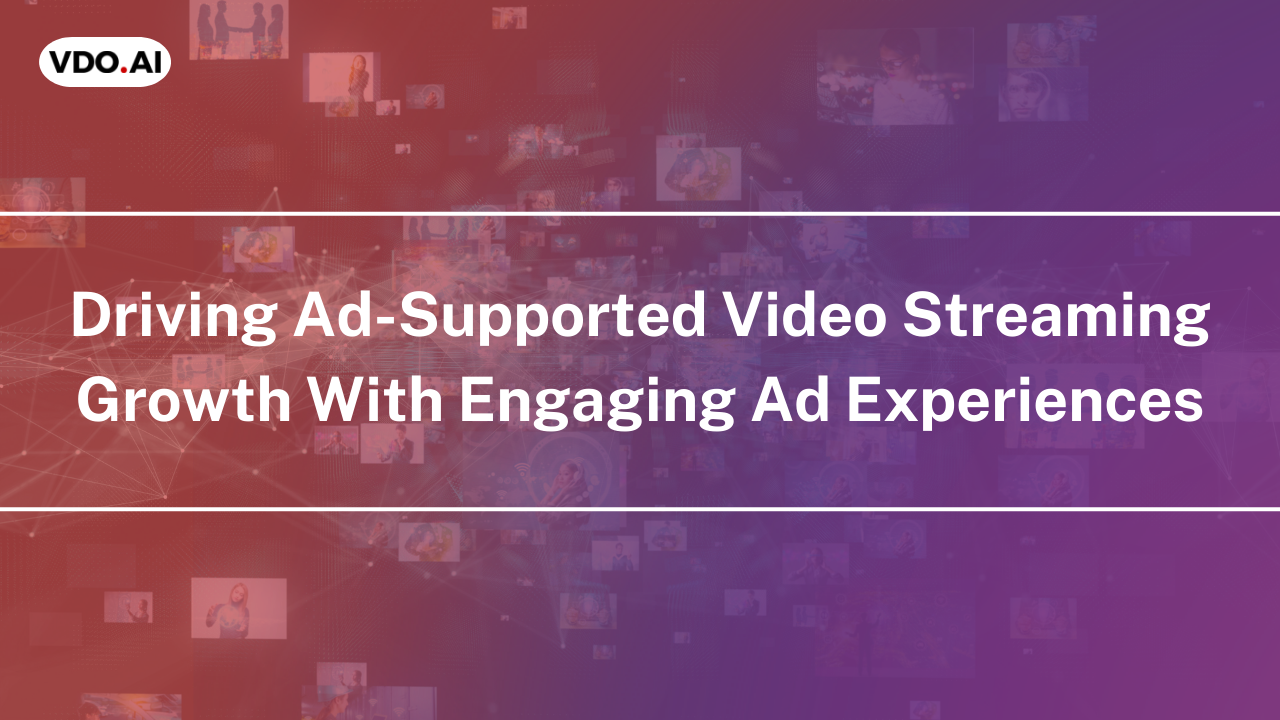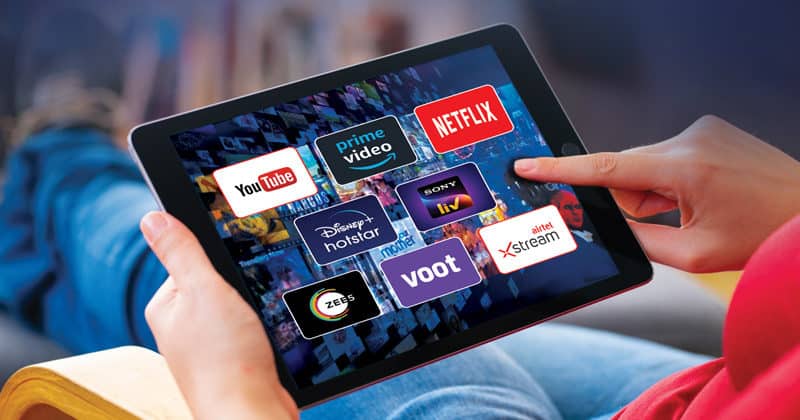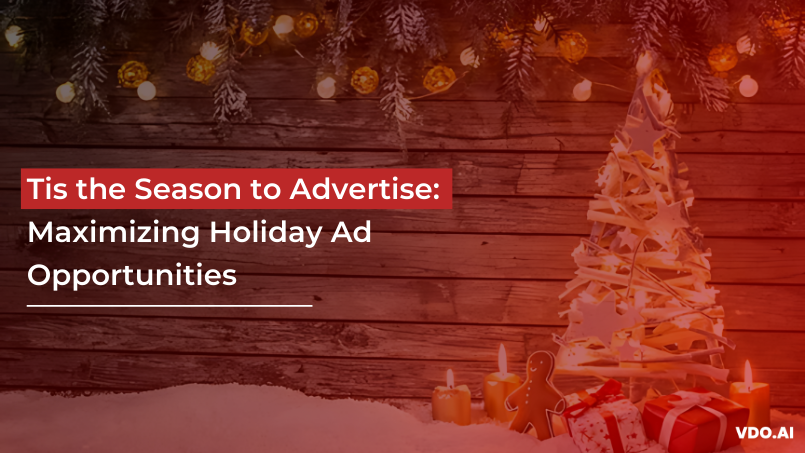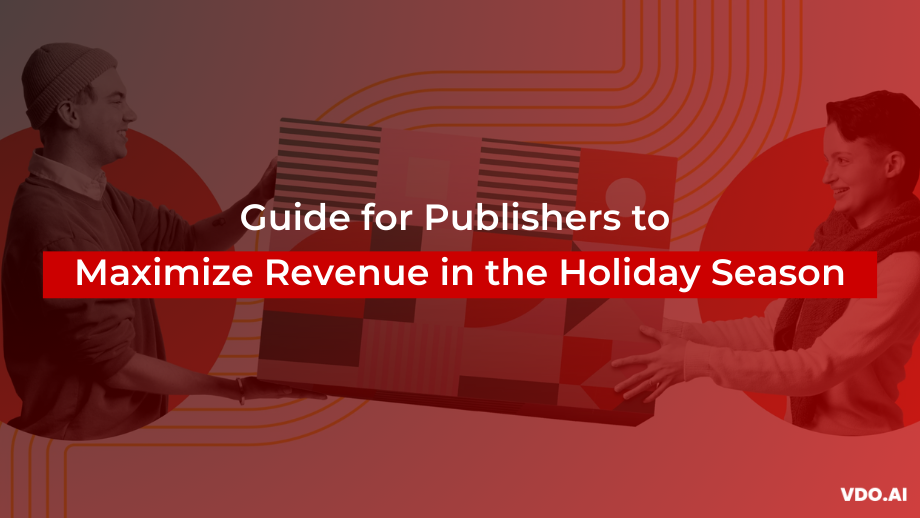Driving Ad-Supported Video Streaming Growth With Engaging Ad Experiences
Reading Time: 4 minutesOwing to economic uncertainty and subscription slowdowns, media owners who offer a pure subscription model are shifting to ad-supported video streaming models for improved growth and better revenue opportunities. Netflix, which was initially committed to keeping its service ad-free, has announced its intent to explore lower-cost, ad-supported subscription plans. Not only Netflix, but Disney too has stated similar ad-supported intentions for its Disney+ offering. This has captured the attention of many advertisers, who are seeking new ways to reach their target audiences in today’s fragmented and cordless consumer landscape.
While the decisions of these streaming giants will bring significant shifts in the TV industry, ads on streaming services won’t deter most consumers, as they have begun to embrace ad-supported video streaming. Nearly two in three US adults prefer having the option for cheaper, ad-supported video streaming subscriptions.
Though, integrating ads into premium content while being conscious of not disrupting the customer experience is a major challenge that lies ahead of the ad tech industry. Content owners need to leverage the latest tech advancements to build their ad breaks with greater control. This will help them optimize the streaming experience while bringing greater opportunities for the buyers to serve meaningful ad experiences.
There are many factors fueling the growth of AVOD streaming services, some consumer-driven, and others driven by OTT platforms themselves. Here are the leading ones.
1. Reduced Cost
With consumers becoming more aware of their spending habits, the popularity of ad-supported streaming services is growing at a faster pace. 46% of consumers cite cost as their top consideration when deciding between two services.
Moreover, to be able to watch their preferred content, viewers often subscribe to multiple services at a time. This results in a monthly bill equivalent to or even more than a cable subscription. The viewers, therefore get frustrated as they have to juggle multiple paid services. Free trials often lure consumers to join a service, however, SVODs witness a significant drop in subscribers after the trial period ends.
2. Accessibility of Content Libraries
AVOD services provide huge libraries of live and on-demand content with hundreds or even thousands of TV shows, films, documentaries, and more, which can be accessed from any smart device. Many of these services don’t even ask for a login ID or credit card to get started. Viewers can start exploring and choosing what to watch as soon as they download the app.
Moreover, they have muddled the difference between ad-supported and paid services in several ways. Based on their viewing patterns, many AVOD services enable viewers to pause, rewind, and fast-forward content and receive relevant recommendations.
3. Increased Monetization Opportunities
The vast content libraries that entice consumers to stream across the services cost money. The only option for subscription platforms to profit from their investments is by increasing subscribers or increasing costs. Since both of these ways have limits, SVOD services will either reach the end of their total addressable market or of what consumers are willing to pay.
Ad-supported models, on the other hand, offer a much more sustainable model for the future of streaming. As consumers are willing to watch a reasonable number of ads in exchange for free content, new advancements in technology are allowing ad-supported streaming services to access additional advertising space. This generates incremental revenue for the platforms and offers new ways for brands to connect with consumers.
Data-Driven Ad Experiences For Maximizing Impact
Over time, consumers have developed higher expectations for high-quality viewing experiences. It is vital to ensure that the ads match the premium streaming environment the viewers are in to avoid intruding on their viewing experience.
OTT streaming is a fragmented space, with users watching content across multiple devices and platforms. Identity fragmentation thus makes it challenging for advertisers to convey essential parameters such as ad frequency across the supply chain. This leads to either failed ad delivery or irrelevant ads, further exacerbating the intricacies of the entire advertising ecosystem.
Buyers and sellers need to adopt a viewer-first approach to avoid consumer ad fatigue. Engaging ad experiences, seamless ad delivery, and ad frequency control are foundational needs. Fortunately, this is not as difficult as it might sound. With custom ad units best suited for OTT environments or QR codes for CTV, non-intrusive engagement is very likely.
A Better Approach To Ad-Supported Video Streaming
To provide consumers with the best viewing experience across ad-supported streaming services, it is essential to serve relevant ads that resonate with them. For this to happen, nothing is more beneficial than audience data. It is capable of driving sophisticated levels of targeting, independent of third-party cookies.
With the future of identity shifting towards seller-defined audiences, media owners will have to play an even bigger role in helping brands connect with the right audiences.
Allowing granular targeting opportunities while protecting user privacy, VDO.AI provides personalized ad experiences across OTT and CTV platforms. The platform optimizes ad relevancy and frequency while prioritizing the end user to maximize impact for both, publishers and advertisers.
Connect with VDO.AI here to transform your journey in the ever-evolving ad-supported streaming landscape.







